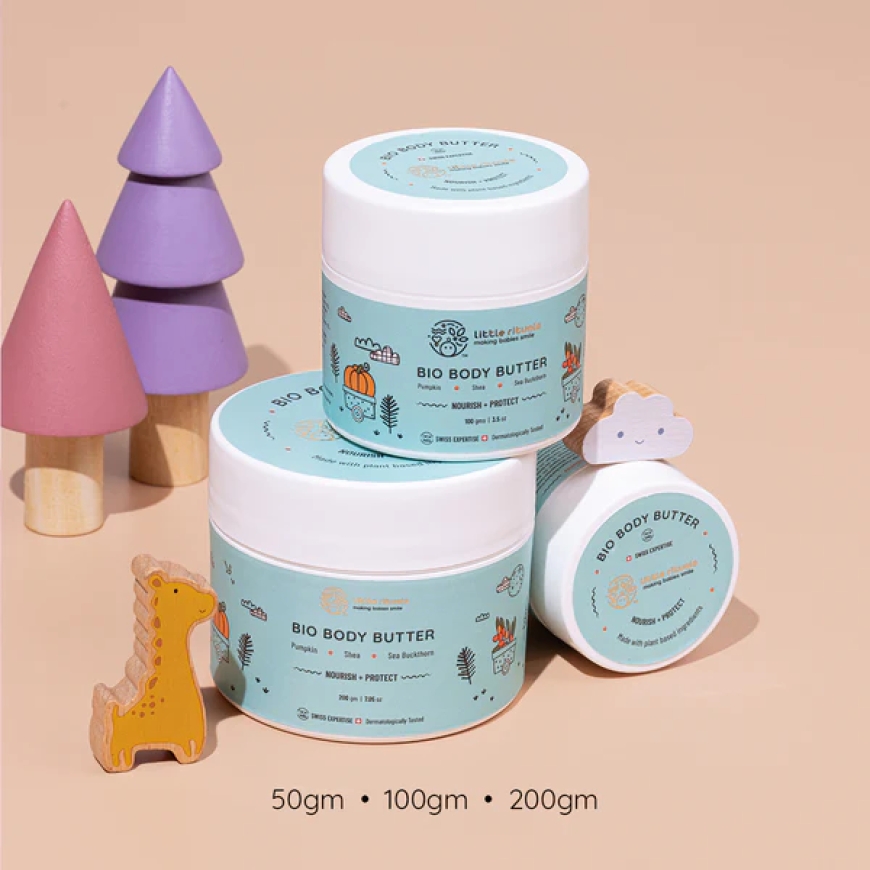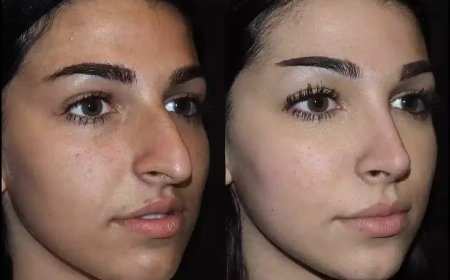Understanding Your Baby’s Skin: What Every Parent Should Know

When you hold your baby for the first time, one of the first things you notice is how delicate and soft their skin is. The skin of a baby is unlike that of a grown-up in several ways: firstly, it is more fragile; secondly, it is more sensitive; and thirdly, it needs a lot of attention. You have to discover your baby's skin, as that will help you avoid cracking, rashes, and irritation. During the first months of life, the nourishment of the skin may be provided with gentle products such as baby body butter.
In this article, we shall take you through the nitty-gritty of baby skin and the related problems to watch out for and how to take care of this sensitive system right.
1. The Unique Nature of Baby Skin
The skin of the baby is much thinner and more permeable when compared to the skin of the adult. This implies that it is highly absorbent as well as that it dries out quicker. It is due to this that newborns are usually dry-skinned or peeling in the initial few weeks after birth. Babies have less developed skin barriers; that is why they are more susceptible to irritation, allergies, and infections. Being aware of it may allow you to select fewer and safer skincare practices.
2. Common Skin Conditions in Babies
Its normal for babies to experience certain skin issues, especially in their first year of life. Some of the most common include
-
Diaper rash: Often caused by prolonged contact with a wet or dirty diaper.
-
Baby acne: Small red bumps on the face that typically resolve on their own.
-
Cradle cap: Flaky patches on the scalp caused by overactive oil glands.
-
Eczema: Red, itchy patches that may flare up due to allergies or irritants.
Understanding these conditions can help you respond appropriately without unnecessary treatments.
3. Importance of Moisturizing
The most important thing is moisturizing your baby in order to keep their skin hydrated and not dry or irritated. My advice is to apply mild, non-fragranced moisturizers directly after bath time when the skin is still wet. This serves to seal hydration and save the skin barrier. Ensure that the product is not only suitable but is also not offensive to sensitive skin as well as not containing harmful chemicals such as parabens or sulfates.
4. Choosing the right fabrics
Clothes that your baby wears physically touch its skin, affecting its comfort level and skin condition significantly. Natural, breathable, and soft materials such as cotton are best meant to be used with babies. Avoid sweaters and other synthetic fabrics, which may trap heat and moisture, and may generate irritation. In addition, new clothes should also be washed prior to use in order to eliminate any forms of chemicals left on them.
5. Bathing tips for healthy skin
Newborns do not always require daily baths. In the first months, two to three times a week will be enough. Apply tepid water when using a delicate-smelling, free baby cleanser. Do not rub or wash to excess since this will wash away natural oils that protect the skin. The skin should always be gently towel-dried with a soft towel, and moisturizer should always be applied after towel-drying.
6. Understanding your babys skin tone
It is totally natural that the skin of the baby takes different shades during the first months. Other newborns have reddish or purple skin, which grows lighter or darker as he or she grows. Others can have blotchy spots or veins showing through. This is all in the process of the body getting used to living outside the womb. Being aware of these changes will eliminate your concerns unnecessarily.
7. Managing Temperature and Humidity
Newborns are not able to maintain the body temperatures as adults. Heat or cold may also result in skin diseases such as heat rashes or dry skin. Use a humidifier in the room as well, and layer your baby to adapt to sudden changes in temperature during the dry seasons. A middle temperature in the room will help a lot to safeguard sensitive skin.
8. Protection from Sun Exposure
The skin of a baby is very sensitive to sunlight, and even short exposure to sunlight causes sunburn. It is wise not to expose infants below the age of six months to direct sunlight. Wear light clothes, hats, and shaded strollers when you are outside. In older babies, select a sunscreen made especially for infants and containing physical blockers, such as zinc oxide.
9. Avoiding Harsh Chemicals and Fragrances
Artificial fragrances, dyes, or preservatives are added to many, even among the baby-marketed products, and they may cause irritation of sensitive skin. Go through the list of ingredients and select products that are hypoallergenic and dermatologically tested. Baby skincare should be like less is more. Follow a simple system with few products.
10. Signs to Consult a Pediatrician
While most baby skin conditions are harmless and temporary, some may require medical attention. Contact your pediatrician if you notice:
-
Persistent rashes that dont improve with home care
-
Blisters, oozing, or swelling
-
Skin that seems painful or extremely itchy
-
Sudden changes in skin color or texture
Its better to be cautious and get a professional opinion if something seems off.
Conclusion
The skin of your baby is a fragile protective blanket that has to be handled with care. With proper knowledge of the features and requirements of your kid and some small but more efficient measures, you can help your child avoid instances of everyday skin problems and lead a comfortable and healthy life. When choosing skincare must-haves, one should always choose and always go for the best products for baby skin that are free of any harsh components and can be used regularly. You can believe names such as Little Rituals, which produce gentle product formulations tailored to the sensitive skin of a baby that will help you in all you do to raise that happy baby.










































